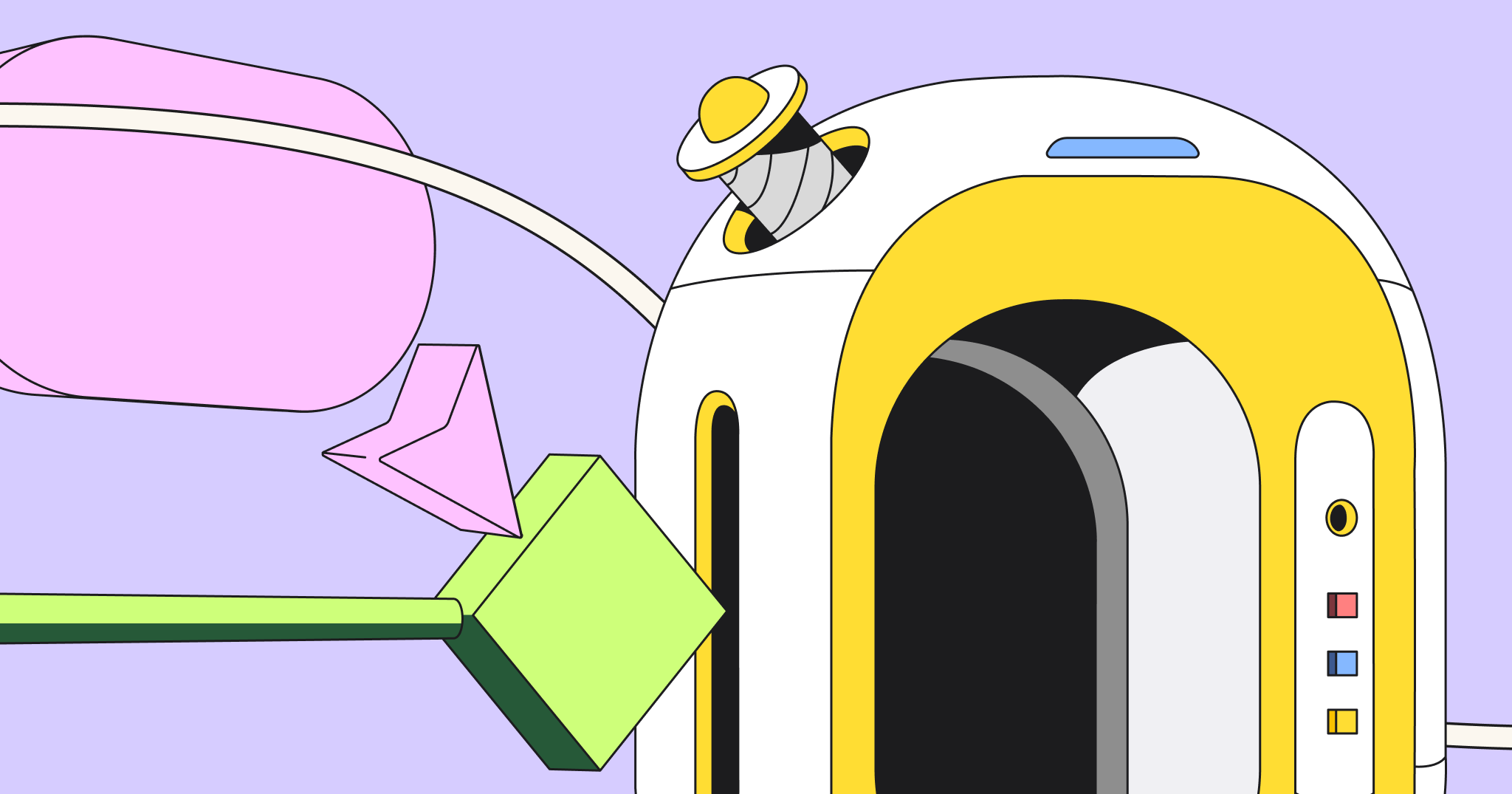At some point, we’ve all experienced a problem with a process or strategy at work. But figuring out why the problem exists can be a daunting task. When you sit your teammates down for a discussion, emotions run high and miscommunication is common.
The 5 Whys is a powerful, easy-to-use technique for getting at the root of a problem. It empowers you and your team to understand why a problem persists and to decide on a path forward.
What is the 5 Whys framework?
The 5 Whys is a popular problem-solving method that individuals and teams use to understand the potential causes of a specific issue. Years ago, Toyota developed the approach to help them get at the heart of complex mechanical issues, so you know it’s legitimate! The technique is easy to use: you ask why a problem happened, and then you ask four more times. By asking “why” on a step-by-step basis, you can get to the root cause of a defect, failure, challenge, or malfunction.
When and Why the 5 Whys Analysis is Used
The 5 Whys framework is useful in a variety of situations. People love it because it helps you have a focused discussion and avoid getting distracted by other topics. You just start with a problem statement, ask why the problem exists, and keep moving through the exercise until you’ve uncovered the problem.
Here are some scenarios where you might find the 5 Whys approach to be useful.
Working on complex products
Remember, the 5 Whys technique was originally developed by Toyota. The car manufacturer needed a clear-cut way of dealing with a product that has thousands of parts. But that doesn’t mean the technique only works for large physical goods. Many organizations use the 5 Whys approach when software malfunctions, when a key deliverable with many moving parts doesn’t work properly, or when a multi-step process breaks down.
Solving complex problems
When a problem is so complex that engineers, designers, or decision-makers are scratching their heads, the 5 Whys approach may serve you well. Maybe your complicated marketing strategy didn’t hit your targets, or an important API isn’t working. Instead of getting overwhelmed, the 5 Whys framework helps you wrap your head around the problem.
Dealing with consistent problems
Maybe the problem doesn’t seem complex, but it keeps coming up. Or maybe you’ve tried multiple solutions and none seem to work. Rather than burning precious time and money on yet another risky bandaid, try the 5 Whys to finally discover what’s going on.
How to conduct a 5 Whys analysis in 6 steps
One of the great things about the 5 Whys framework is that it’s easy to understand. Unlike many other problem-solving techniques, which can be difficult to grasp, you can explain the 5 Whys to your team in minutes. Follow these guidelines any time you need to use the approach.
Step 1 – Form your problem statement.
Start by asking your team what problem you’re about to analyze. Everyone should get a chance to articulate the problem so you’re all on the same page. Sometimes, you might find yourself using the 5 Whys approach to uncover the root of a difficult or charged obstacle. If that’s the case, give your team the time and space to be honest with each other and to have difficult conversations. Write down the problem statement for everyone to reference.
Step 2 – Ask “why has this happened?” 5 times.
Don’t be too literal with it. Feel free to amend the “why” statement to something like “Why does this keep happening?” or “Why are we having this problem?” Keep going until you’ve asked “why” five or more times. It might feel unnatural, but eventually, you’ll push through any awkwardness to uncover the root of the problem.
Step 3 – Jot down logical causes.
Okay, now you have a pretty good handle on your problem. Write down any logical causes that have followed from your 5 Whys analysis. Regardless of whether those causes came from your first “why” or your fifth, make a detailed note of them. Discuss the causes with your team and make sure you’re all agreed.
Step 4 – Hypothesize an answer.
Now that you have your logical cause, it’s time to come up with some potential solutions. At this stage, you’re just having a conversation. You don’t need to come up with the perfect solution in this meeting. Have everyone go around the room and say (or write down) a possible solution. Ask everyone to vote on the most actionable one.
Step 5 – Test your hypothesis.
Put your solution to the test with some experiments. If you’ve decided that a marketing campaign failed because you didn’t choose the correct target audience, then maybe you can come up with some A/B tests to vet possible solutions. Aim for low-stakes tests that you can use to draw meaningful conclusions.
Step 6 – Repeat until solved.
Iterate until you’ve solved the problem! Don’t be discouraged if it doesn’t happen right away. Sometimes, it might take multiple rounds of “whys” followed by many rounds of testing to uncover a solution. Keep an open line of communication among your teammates and don’t give up.
Try Miro today
A simple 5 Whys example
The 5 Whys is an adaptable, easy-to-use framework for uncovering the root of a problem. Organizations and teams of all sizes use the framework to overcome complex, high-stakes challenges. Here’s a quick example to help you bring this method of analysis to your own team.
Let’s say your team has been working on an app for many months. You rolled out a beta version late last quarter. You were supposed to ship the app to the rest of your users at the beginning of this quarter, but a problem arose: a bunch of your early users complained of a fatal error that caused the app to crash. As a result, you couldn’t ship it, and your customers were disappointed.
Step 1 — Write down your problem statement.
As we mentioned above, the first step in following the 5 Whys framework is to clearly and succinctly define what problem you’re trying to solve. The entire group should be clear about this issue. In this case, the problem statement is: your app wasn’t ready to ship to your customers.
Step 2 — Start with the broadest possible question.
Start with the broadest possible question. Then aim to answer it. Why wasn’t the app ready for your customers? It wasn’t ready because there was a bug in the code that caused it to crash.
Drill down into that question. Why was there a bug in the code that caused it to crash? There was a bug in the code because the engineers didn’t get user feedback in time to fix it.
Keep drilling down. Why didn’t the engineers get that user feedback? They didn’t get the feedback because the development team didn’t provide an easy way for users to submit their feedback.
Continue drilling down, asking more and more precise questions as you get closer to the answer. Why didn’t the development team provide an easy way for users to leave feedback? They didn’t provide an easy way for users to leave feedback because they weren’t clear on deadlines for the project.
Ask “why” at least one more time. Why wasn’t the development team clear on deadlines for the project? They weren’t clear on deadlines because they weren’t meeting with stakeholders often enough to know when the timeline changed.
Step 3 – Write down logical issues.
Now you have enough information to write down logical causes. It seems that this problem stemmed from a lack of communication between stakeholders. That caused the development team and engineering team to become misaligned.
Step 4 – Once you’re ready, you can come up with a possible solution to this problem.
Once you’re ready, you can come up with a possible solution to this problem. In the future, internal stakeholders will hold weekly check-ins to make sure they’re aligned on where the project is headed.
Step 5 – Put that hypothesis into action.
Here’s where you get to test out your hypothesis and see what effects it has. Moving forward, start holding weekly check-ins and see what happens. If miscommunication and confusion goes down, you’ll know you’re on the right track.Step 6 – Adjust your strategy, if needed
Resist the urge to consider a problem “solved” and move on immediately. It’s important to revisit how the solution is functioning in the weeks ahead, continually checking in with everyone on the team to see how they’re feeling about it. You may need to tweak your strategy over time.
How 5 Whys helped solve the problem
This example clearly showcases the power of the 5 Whys. What looked like a problem with code turned out to be a symptom of miscommunication.
Although this is just a hypothetical, we all know stuff like this happens every day. But it’s often difficult to uncover the root causes of a problem without months and months of exploration. With the 5 Whys, you can overcome costly challenges in a much shorter amount of time.
Try the 5 Whys template for free
Clearly, asking “why?” isn’t just a technique used by persistent 4-year-olds – it’s actually a quick and easy way to identify a root cause. Countless teams across different industries have had great results using this framework. Save time, collaborate with your team, and solve hard problems with Miro’s free 5 Whys template.
How Miro helps distributed teams collaborate
Working with a remote team can be challenging — but it also offers unparalleled opportunities for creativity and collaboration. Miro’s online whiteboard helps teams overcome cultural divides, communication silos, geographic barriers, and micro-cultures to empower you to stay connected and do great things.
Miro has a variety of templates and tools for teams to help you and your team:
- Create a mind map
- Manage a scrum board
- Create user story maps and customer journey maps
- Work with sticky notes, even if you aren’t in the same room
- Generate flow charts and diagrams
- Run brainstorming sessions
And lots more… try Miro for remote collaboration today!



